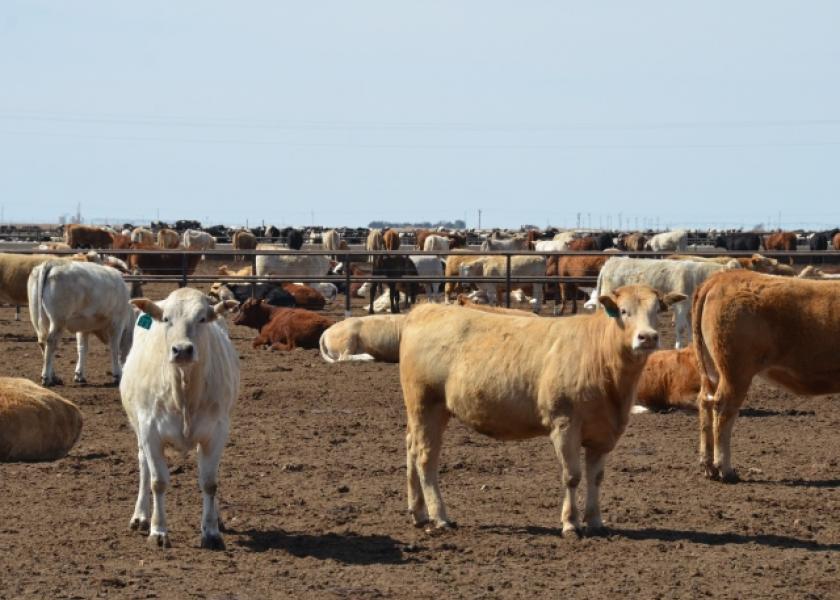Gulke: Correction in Cattle Market Was Waiting to Happen

It was a tough week in the cattle market with both live and feeder cattle futures marking new contract lows on what Jerry Gulke, president of The Gulke Group, says has been correction waiting in the wings.
“We’ve been warning about feeder cattle and live cattle for quite some time: This thing looks like an exit waiting to happen,” Gulke said Friday on Weekend Market Report about the heavy losses incurred in the cattle.
October live cattle ended Friday’s session at $136.85/cwt, down $3.15 from last week’s close while October feeder cattle incurred heavier losses and fell $9.27 ½ on the week to finish at $185.82 ½.
The steep declines, Gulke noted, are signals that the market was ready for a correction after much expansion of the cattle industry.
“When you consider what you have to pay for feeder cattle, it’s obvious that the guys who work that formula that feeder cattle aren’t worth that much, and we’ve seen a huge drop in feeder cattle,” Gulke said. “We’re still high relative to years ago, but it means that a lot of these folks probably got into the expansion business, and were told by some the cattle industry that they thought the cattle market was good for the next two years.”
In USDA’s September Cattle-on-Feed report released Friday, cattle and calves on feed for slaughter in feedlots as of Sept. 1 were tallied at 9.99 million head, compared to 9.72 million at the same time last year.
Cattlemen have been seeking to take advantage of lofty feeder cattle prices by holding back heifers to use as future cows to raise a calf, and thought the market would reward their expansion with high prices for an extended period, Gulke said.
“Now we’ve got red ink in here, and they think that what the market is seeing is perhaps a possibility that we will stop retaining cows,” Gulke said.
That threat of reduced cow retention, he added, is causing nervousness in the marketplace.
Reduced cow retention weighs particularly heavy on the feeder cattle market, Gulke noted. Since October feeder cattle peaked at a contract high in June at $223.30/cwt, prices have been trending steadily lower to new contract lows and suffered steeper losses this week than live cattle.
“To say that was a train wreck would be an understatement,” Gulke said of the retracement in the market. “It really came apart this last week or two, even the month of September.”
Corn, Soy Await Yield Reports
With the news on Thursday of the Federal Reserve holding interest rates steady and of FSA’s September acreage data showing higher prevented-planted acres than expected having been digested into the market, corn and soybeans are trading sideways looking for direction, Gulke said.
The December corn futures contract sank 9 ¾ cents lower on the week to end at $3.77 ¼, November soybean futures posted a loss of 7 cents to finish the week at $8.67 ¼, and CME December wheat futures were down 1 ¾ cents at $4.86 ¾.
USDA’s Grain Stocks report is not due out until Sept. 30, Gulke added, which leaves the focus for now on yield reports as combines move further north.
“We’re still debating the yield,” Gulke explained. “We’d like to hear some yield results out of the western corn belt and more out of the east, and we expect it to be bad in the east and good in the west.”
As of Sept. 14, 5% of the U.S. corn crop was reported harvested, according to USDA’s crop progress report released Monday, with Illinois at 6% complete and Missouri at 14% while western state, Nebraska, was 1%. Meanwhile, 35% of the soybean crop was reported as dropping leaves, up from 18% the week prior.







